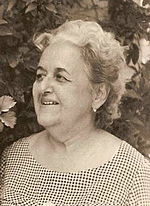19th century

As soon as in 1804, a concert program in Havana announced a vocal concert “accompanied at the fortepiano by a distinguished foreigner recently arrived” [2] and in 1832, Juan Federico Edelmann (1795-1848), a renowned pianist, son of a famous Alsatian composer and pianist, arrived in Havana and gave a very successful concert at the Teatro Principal. Encouraged by the warm welcome, Edelmann decided to stay in Havana and very soon he was promoted to an important position within the Santa Cecilia Philharmonic Society. In 1836 he opened a music store and publishing company. [3]
Edelmann worked also as a piano professor and had several prestigious disciples. One of the most renowned is Manuel Saumell Robredo (1818-1870). Although his activity as a pianist never transcended the limits of his country, he acquired fame as a composer for elevating the category of the Cuban contradanza, from a simple dance tune to an actual “pièce de concert,” meant to be performed in the elegant salons of the Cuban haute bourgeoisie. [4]
Differently from Saumell, two other disciples of Edelmann, Pablo Desvernine (1823-1910) and Fernando Arizti (1828-1888), achieved recognition outside their country. After studying with Edelmann, Desvernine went to Paris to continue studies with Kalkenbrenner and Thalberg. He gave concerts in several European and American Cities, and also worked as a piano teacher in New York before returning to Cuba. [5] Ferando Arizti also studied in Paris with Kalkenbrenner and played with his friend Desvernine in Spain. After his return to Cuba in 1848, he dedicated himself to teaching and had several important disciples such as: Nicolás Ruiz Espadero (1832-1890), his daughter Cecilia Aristi (1856-1930) and Angelina Sicouret (1880-1945). [6]
Ruiz Espadero also studied with Polish composer Julian Fontana, the first to compose a piece of complex format for piano that included Cuban themes, La Havanne, Fantaisie sur des motifs américains et espagnols op. 10, from 1845. [7] [8] Espadero was a close friend of American pianist and composer Louis Moreau Gottschalk and was certainly a virtuoso pianist, but rarely played in public due to his introverted character. He was also a fine composer and professor. [9] Fernando Arizti's daughter, Cecilia, studied with his father and with Espadero. She gave concerts in Cuba and America and was an accomplished composer and professor. [6]
Nicolás Ruiz Espadero was also a professor of other distinguished artists such as Carlos Alfredo Peyrellade (1840-1908) and Ignacio Cervantes Kawanagh (1847-1905). After studying with Espadero, Peyrellade went to continue his musical education in Paris, where he pursued a piano performance career. In 1865, he returned to Cuba where he opened two well known music schools in Havana and Camagüey. [10]

One of the most prestigious Cuban musicians, Ignacio Cervantes studied in Paris with professors Marmontel and Alkan. He received several piano awards, was a candidate to the Rome Award and received compliments from Rossini, Liszt and Paderewski. During the Ten Years' War, Cervantes lived and gave concerts in the United States and Mexico. After the Cuban independence he worked as orchestra director at the Tacón Theatre. Ignacio Cervantes is considered one of the greatest composers of his country, and his Cuban Dances for piano are an outstanding contribution to the island's cultural patrimony. [11]
Another successful Cuban pianist from the 19th century was José Manuel "Lico" Jiménez (1851-1917). He studied with Reinecke and Moscheles in Leipzig and with Marmontel in Paris. Jiménez gave numerous successful recitals throughout Europe and Wagner and Liszt complimented him as a pianist. Lico Jiménez returned to Cuba in 1879 and in 1890 he established himself in Hamburg, Germany, where he was appointed as professor at the conservatory. [12]
Late 19th century
At the turn of the century, two notable pianists established themselves in Cuba and founded conservatories that contributed to the academic formation of numerous Cuban pianists and musicians. They were Hubert de Blanck (1856-1932), a Dutch pianist, [13] and the Asturian professor Benjamín Orbón (1874-1914), father of the renowned pianist and composer Julián Orbón (1925-1991), a distinguished member of the “Grupo de Renovación Musical.” [14]
Alberto Falcón (1873-1961) studied piano at Conservatorio Hubert de Blanck in his early years and at a later time won a competition for the piano professorial chair at the Bordeaux Conservatory in France. He studied composition with Jules Massenet and toured through Europe and Cuba as a pianist. Upon returning to his country he opened a conservatory that bore his name, where he encouraged the practice of chamber music. He also created an orchestra for that purpose. Falcón was a member of the Honor Committee at the Paris Conservatory and also a member of the National Academy of Arts and Humanities. [15]
Very much like Alberto Falcón, Cuban pianist, composer and professor Joaquín Nin Castellanos (1879-1949) lived most of his life outside his motherland. He studied in Spain and in France at the Schola Cantorum, and lived in Germany for some years. After returning to Cuba in 1910 he moved to Brussels where he gave concerts and lectures. He worked also as a professor at the University of Brussels. Nin Castellanos returned to Havana in 1939 where he dedicated himself to teaching piano. [16] Pianist and composer Ernestina Lecuona (1882-1951) began his musical studies at the Centro Asturiano Music Academy in Havana and continued studies at the Paris Conservatory. As a pianist, she gave numerous concerts in Cuba and throughout America. She taught the first music lessons to her famous brother Ernesto Lecuona and was also the grandmother of the prestigious composer and guitarist Leo Brouwer. [17]










